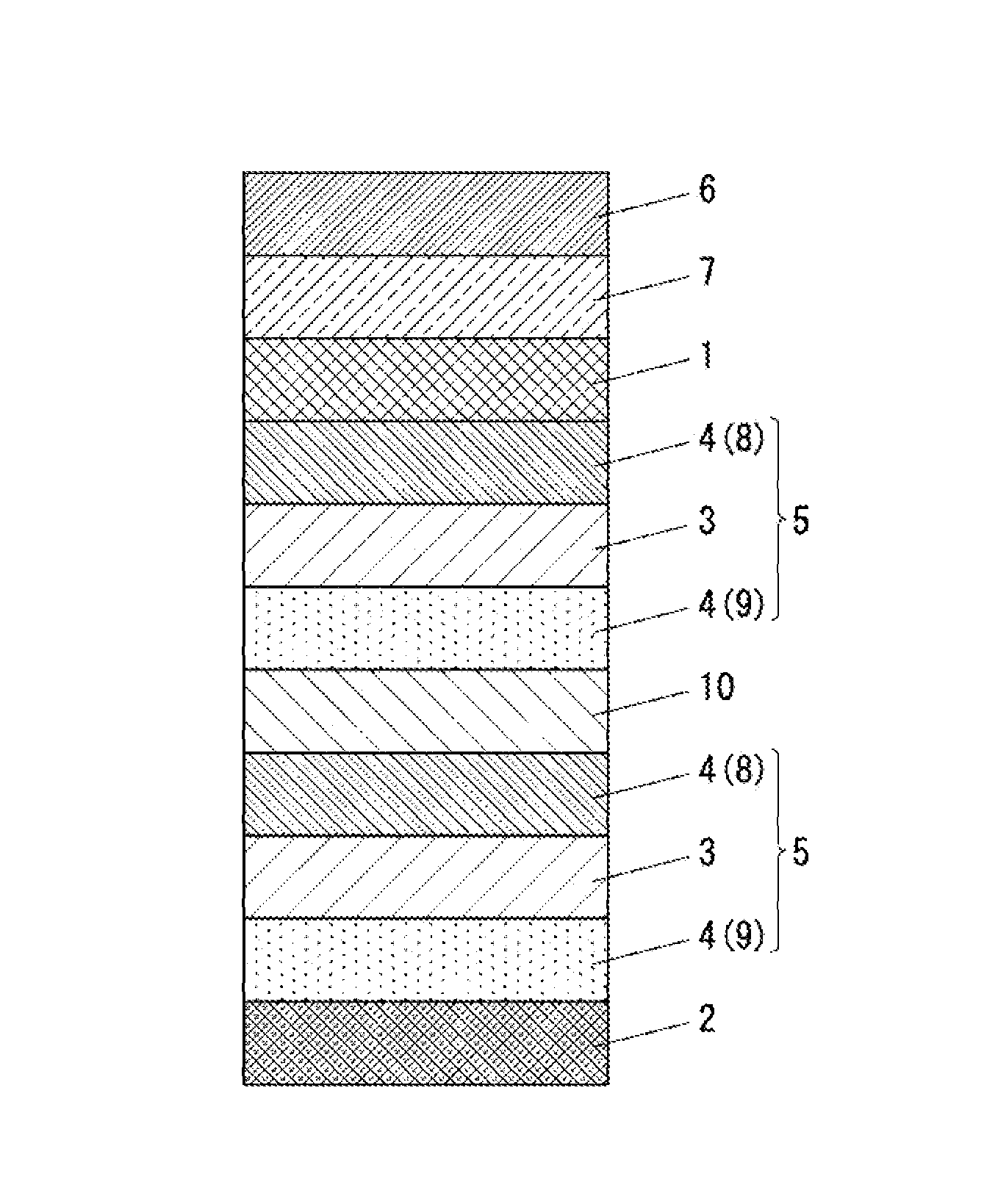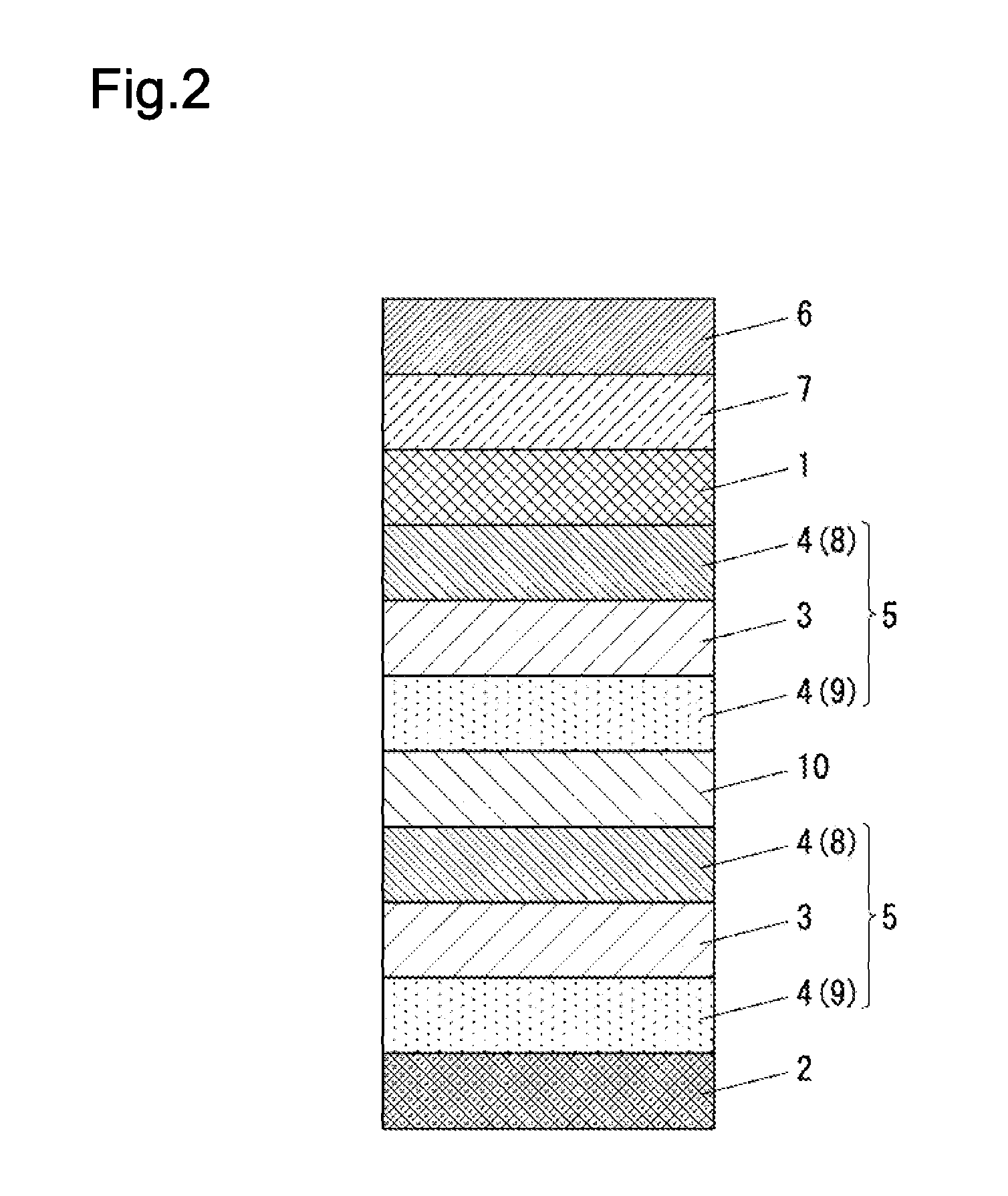Organic electroluminescence element
a technology of electroluminescence elements and organic materials, which is applied in the direction of luminescence screens, thermoelectric devices, and discharge tubes, etc., can solve the problems of unclear optical design principles for future progress, and the literature 1 fails to disclose the consideration of the phase shift of light, so as to increase the light flux or the effect of photon number
- Summary
- Abstract
- Description
- Claims
- Application Information
AI Technical Summary
Benefits of technology
Problems solved by technology
Method used
Image
Examples
example 1
[0093]The light transmissive substrate 6 with the light scattering layer 7 was prepared according to the following steps. In a first, 86.8 g tetraethoxysilane was combined with 803.5 g isopropyl alcohol, and was further combined with 34.7 g gamma-methacryloxypropyl trimethoxysilane and 75 g 0.1-N nitric acid. Then, these were mixed with each other by the disper, whereby solution was obtained. The solution was agitated for 2 hours in the constant temperature reservoir of 40 degree Celsius. Consequently, 5 wt % solution of silicone resin having the weight-average molecular weight of 1050 was prepared as a binder formation material.
[0094]Then, the methyl silicone particles were added to the silicone resin solution. (The methyl silicone particles had mean diameter of 2 micrometer. The methylsilicone particles was Tospearl 120 (GE Toshiba Silicone).) The silicone resin solution has a ratio of the methyl silicone particles:the silicone resin is equal to 80:20 according to the solid conten...
example 2
[0103]The organic electroluminescence element was prepared according to the same condition of the example 1, except for the thickness of the charge transport layer 9; the thickness of the charge transport layer 9 is 235 nm.
example 3
[0104]The organic electroluminescence element was prepared according to the same condition of example 1, except for the thickness of the charge transport layer 9; the thickness of the charge transport layer 9 has a thickness of 350 nm.
PUM
 Login to View More
Login to View More Abstract
Description
Claims
Application Information
 Login to View More
Login to View More - R&D
- Intellectual Property
- Life Sciences
- Materials
- Tech Scout
- Unparalleled Data Quality
- Higher Quality Content
- 60% Fewer Hallucinations
Browse by: Latest US Patents, China's latest patents, Technical Efficacy Thesaurus, Application Domain, Technology Topic, Popular Technical Reports.
© 2025 PatSnap. All rights reserved.Legal|Privacy policy|Modern Slavery Act Transparency Statement|Sitemap|About US| Contact US: help@patsnap.com



